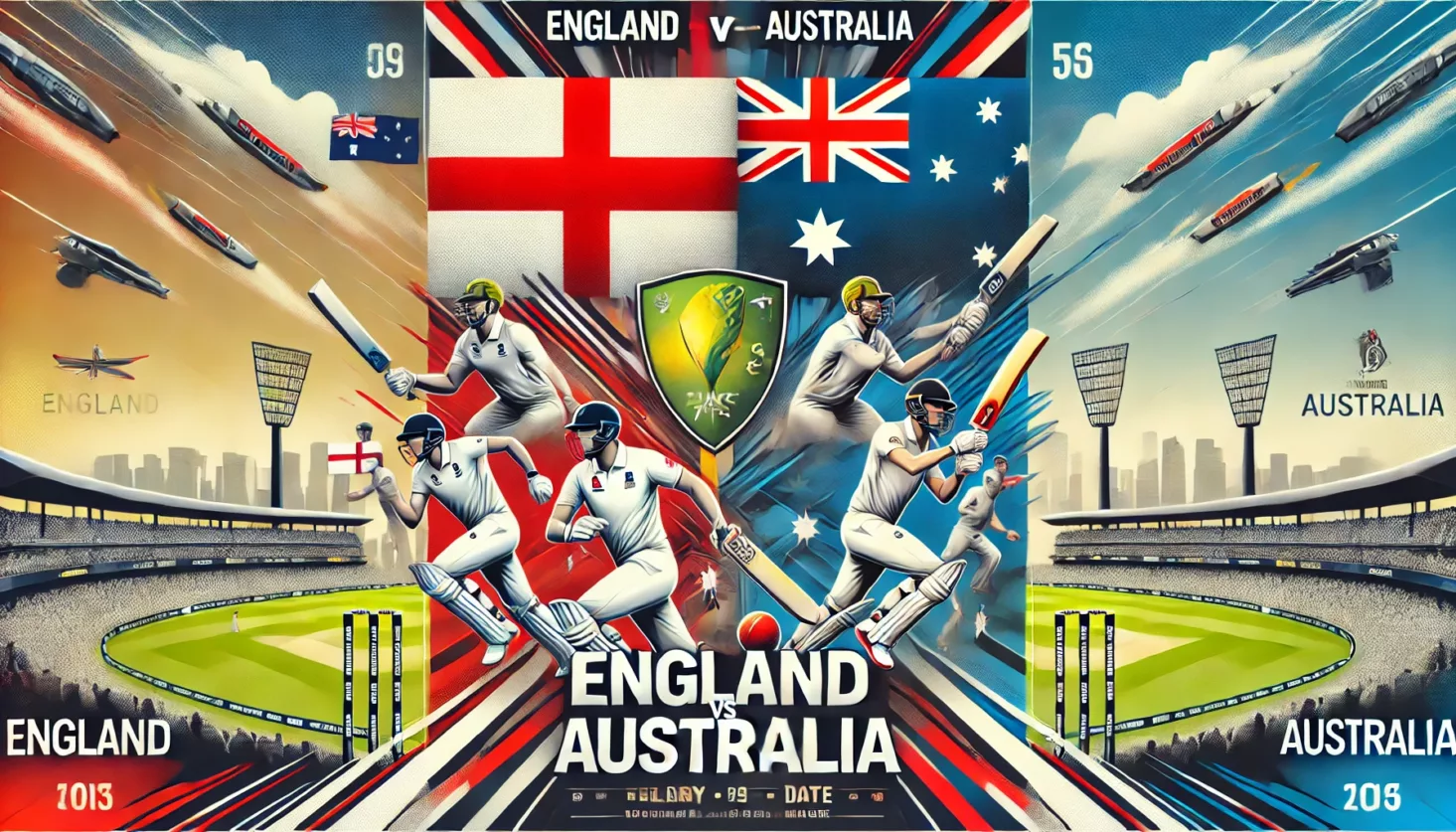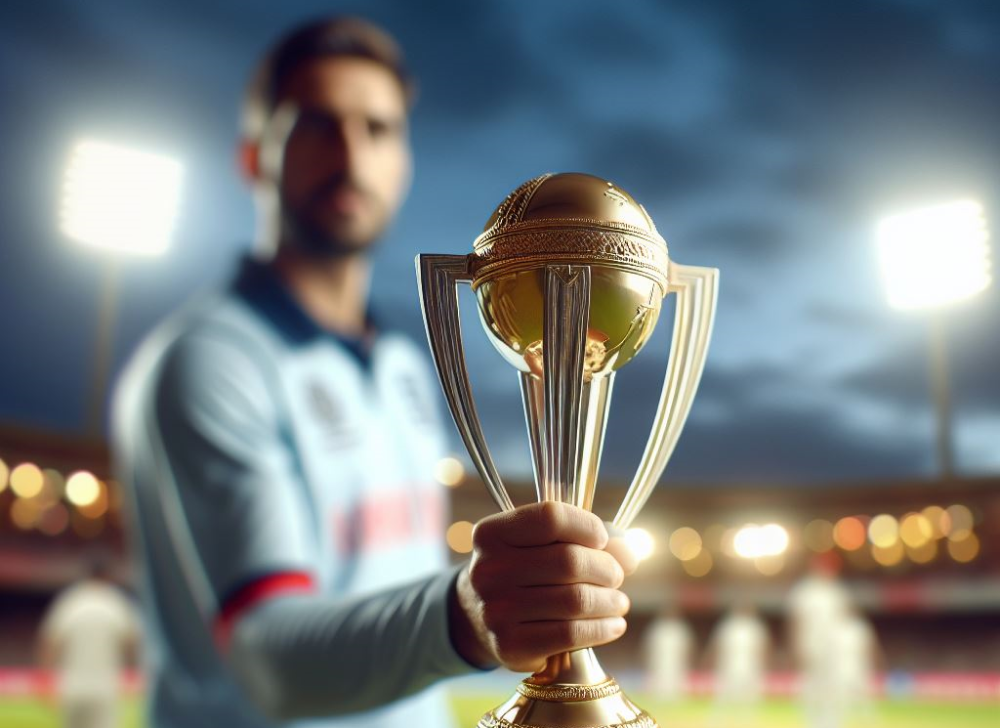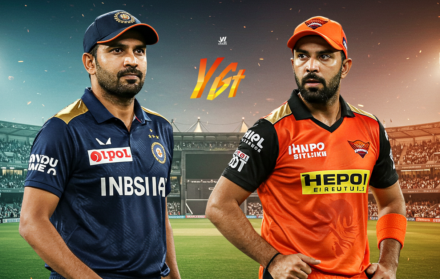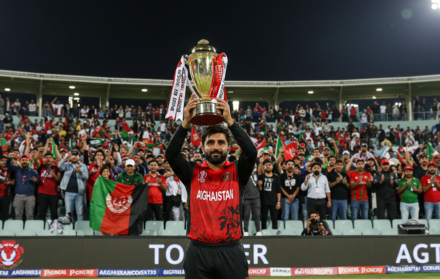
The Evolution of Cricket Match Scheduling
The evolution of cricket match scheduling reflects the sport’s dynamic history, adapting to various changes in society, technology, and the global sports landscape. Cricket, with its deep-rooted traditions, has undergone significant transformations since its inception, particularly in how matches are scheduled and organized. Understanding the history and evolution of cricket is crucial to appreciating how the sport has adapted to meet the demands of modern audiences while preserving its core values.
As the game evolved, so did the formats in which it is played. The introduction of new formats, from the traditional Test matches to the fast-paced T20s, has had a profound impact on how tournaments and series are scheduled. These different formats of cricket require careful planning to ensure that each match fits within the broader context of the competition, balancing the needs of players, fans, and broadcasters.
Technology has also played a pivotal role in shaping the way cricket matches are scheduled. From advanced data analytics to sophisticated broadcasting arrangements, the impact of technology in cricket cannot be overstated. Technology has enabled more efficient scheduling, ensuring that matches are played at optimal times and locations, enhancing the overall experience for both players and spectators.
The process of organizing cricket tournaments involves meticulous planning and coordination. It’s not just about selecting teams and venues but also about understanding the complexities of how cricket tournaments work. This includes considerations like the timing of matches, the rotation of venues, and the management of player workloads, all of which are critical to the success of any tournament.
The toss has always been a significant factor in cricket, often influencing the outcome of a match. The significance of the toss in cricket matches adds another layer of strategy to the scheduling process, as captains must decide the best course of action based on conditions that can change dramatically over the course of a day or series.
Choosing a captain is another strategic element that impacts match scheduling. The process of how a captain is chosen for a cricket team involves assessing not only a player’s skills but also their ability to lead under various conditions and scheduling pressures, which can influence the outcomes of crucial matches.
As cricket continues to expand globally, the scheduling of matches within various cricket leagues has become increasingly complex. Leagues must navigate international calendars, player availability, and local considerations, making the scheduling process more challenging yet more critical than ever before.
Looking ahead, the future of cricket will likely see further innovations in match scheduling as the sport continues to grow. The balance between tradition and innovation will remain at the heart of cricket’s evolution, ensuring that the game remains relevant and exciting for future generations.
The evolution of cricket match scheduling is a reflection of the sport’s adaptability and resilience. By embracing new formats, technologies, and strategies, cricket has successfully navigated the challenges of a changing world, ensuring that it remains a beloved sport across the globe.
The Early Days: Traditional Test Match Scheduling

Cricket’s origins are deeply rooted in tradition, and the scheduling of matches has long reflected the sport’s storied history. In the early days of cricket, Test matches were the pinnacle of the game, and scheduling was straightforward but drawn-out. Matches were played over several days, often five, with no time limits on innings. This format allowed for a slow, strategic approach to the game, where endurance, patience, and technical skill were paramount.
Test matches, first introduced in 1877, set the standard for how cricket was played and viewed. The scheduling of these matches was often dictated by the seasons, with matches primarily held during the summer months when the weather was most favorable. In countries like England and Australia, where cricket has long been a staple of the sports calendar, this meant that Test matches were a much-anticipated summer event, drawing crowds to iconic venues like Lord’s and the Melbourne Cricket Ground.
The schedule of Test matches was also influenced by the logistics of travel. In the late 19th and early 20th centuries, international tours involved long sea voyages, which meant that teams would spend months away from home, playing a series of matches in the host country. These tours were meticulously planned, with matches scheduled well in advance to ensure that teams could play multiple Tests against their hosts. The schedule allowed for ample rest days between matches, acknowledging the physical and mental demands of the game.
However, the rigidity of Test match scheduling also meant that cricket was a slow-moving sport, with limited opportunities for teams to play each other outside of these lengthy tours. This created a somewhat insular world of cricket, where only a few nations regularly competed at the highest level. The focus on bilateral series, where two countries would play a series of Test matches against each other, meant that the sport was largely confined to traditional cricketing nations like England, Australia, and South Africa.
The traditional scheduling of Test matches also had a significant impact on the way the game was played. With no time limits on innings and matches lasting up to five days, the emphasis was on building large totals, wearing down the opposition, and playing for a draw if a win was out of reach. This approach required a level of concentration and discipline that became the hallmark of great Test cricketers, who were often judged as much on their ability to occupy the crease for long periods as on their ability to score runs quickly.
The early days of cricket match scheduling were defined by the tradition of Test matches, with a focus on long, drawn-out contests that emphasized endurance and technical skill. The schedule was shaped by the seasons and the logistics of international travel, creating a slow-moving, yet revered format that set the standard for cricket in its early years. While Test cricket remains a cornerstone of the sport, the evolution of match scheduling in later years would bring significant changes to how the game is played and experienced.
The Introduction of One-Day Internationals: A New Era of Scheduling
The introduction of One-Day Internationals (ODIs) in the early 1970s marked a significant turning point in the evolution of cricket match scheduling. Unlike the traditional Test matches, which could last up to five days, ODIs were designed to be completed in a single day, offering a faster-paced and more spectator-friendly version of the game. This new format required a radical shift in how matches were scheduled, paving the way for a more dynamic and commercially viable form of cricket.
The first official ODI was played between Australia and England in 1971, and the success of this match quickly led to the adoption of the format by other cricketing nations. ODIs were initially scheduled as standalone matches or as part of a series, often played during the same tours that featured Test matches. However, the shorter duration of ODIs allowed for more matches to be scheduled within a given period, increasing the frequency of international cricket and providing fans with more opportunities to watch their favorite teams in action.
The scheduling of ODIs also introduced the concept of day-night matches, where games would start in the afternoon and continue into the evening under floodlights. This innovation made cricket more accessible to working fans, who could attend matches after office hours or watch them on television in prime time. The day-night format quickly became popular, leading to its widespread adoption and further influencing how matches were scheduled to maximize viewership and attendance.
The introduction of ODIs also had a significant impact on the scheduling of international tours. Teams now had to balance the demands of both Test and ODI cricket, leading to more complex tour schedules that included a mix of formats. This shift required careful planning to ensure that players could manage the physical and mental demands of switching between the longer, more strategic Test matches and the shorter, more aggressive ODI format. As a result, cricket boards began to schedule more rest days and recovery periods between matches, recognizing the need to maintain player fitness and performance across different formats.
ODI cricket also brought with it the concept of tournaments, such as the Cricket World Cup, which was first held in 1975. These tournaments required careful scheduling to accommodate multiple teams, venues, and matches within a limited timeframe. The success of the World Cup and other ODI tournaments demonstrated the potential for cricket to be packaged and marketed as a global sport, with carefully scheduled events that could capture the attention of fans worldwide.
The introduction of One-Day Internationals marked the beginning of a new era in cricket match scheduling. The shorter format allowed for more frequent and flexible scheduling, making the game more accessible to fans and creating new opportunities for international competition. The success of ODIs and the innovations in scheduling that accompanied them set the stage for further developments in cricket, including the rise of T20 cricket and the modern scheduling landscape.
The Rise of T20 Cricket: Revolutionizing Match Scheduling

The rise of Twenty20 (T20) cricket in the early 2000s revolutionized the way cricket matches were scheduled, introducing a format that was even shorter and more dynamic than One-Day Internationals. T20 cricket, with its fast-paced, high-energy style, quickly became a fan favorite, leading to significant changes in how cricket boards and organizers approached match scheduling. The format’s popularity has not only transformed the game itself but also the way cricket is marketed, consumed, and experienced by audiences around the world.
The first official T20 match was played in 2003 in England, and its success prompted other cricketing nations to adopt the format. The key feature of T20 cricket is its brevity: each team faces a maximum of 20 overs, with matches typically lasting around three hours. This condensed format has made T20 cricket highly accessible, fitting neatly into an evening or weekend schedule, which is a stark contrast to the multi-day Test matches or day-long ODIs. As a result, T20 matches can be scheduled more frequently, with multiple games often played in a single day at major tournaments.
The scheduling of T20 cricket has been heavily influenced by its commercial appeal. The format’s short duration and entertainment value make it ideal for prime-time television slots, leading to increased broadcast revenues and sponsorship opportunities. This commercial success has driven cricket boards to schedule more T20 matches, both as standalone fixtures and as part of domestic and international tournaments. The Indian Premier League (IPL), launched in 2008, is a prime example of how T20 cricket has transformed match scheduling. The IPL’s tight schedule, with matches played almost daily over a six-week period, has become a model for other T20 leagues around the world.
T20 cricket has also introduced the concept of franchise-based leagues, where teams are not necessarily tied to national or regional cricket boards but are instead owned by private entities. This has led to a new approach to scheduling, where leagues like the IPL, Big Bash League (BBL), and Caribbean Premier League (CPL) are planned around the availability of international stars and the global cricket calendar. The need to attract top players from around the world has made scheduling a more complex and strategic process, balancing the demands of domestic leagues with international commitments.
The rise of T20 cricket has also influenced the scheduling of international tours and series. With the increasing popularity of the format, cricket boards have had to find ways to incorporate T20 matches into traditional tours that previously focused on Test and ODI cricket. This has led to the creation of T20 series within tours, often played alongside Test and ODI series, adding another layer of complexity to the scheduling process. Additionally, standalone T20 tournaments, such as the ICC T20 World Cup, have become a regular feature on the international cricket calendar, requiring careful scheduling to avoid clashes with other major events.
The rise of T20 cricket has revolutionized match scheduling, introducing a fast-paced, commercially driven format that has transformed the way cricket is played and consumed. The success of T20 leagues and tournaments has led to more frequent and strategically scheduled matches, making cricket more accessible and entertaining for fans around the world. The evolution of T20 cricket continues to shape the modern scheduling landscape, as cricket boards and organizers adapt to the demands of this popular format.
The Challenges of Modern Cricket Scheduling
As cricket has evolved, so too have the challenges associated with scheduling matches in an increasingly crowded and complex calendar. The rise of multiple formats—Test, ODI, and T20—alongside domestic leagues and international tournaments has made scheduling a delicate balancing act. Cricket boards and organizers must navigate a range of factors, from player workload management to broadcast rights and commercial interests, to ensure that matches are scheduled in a way that benefits the sport, the players, and the fans.
One of the primary challenges of modern cricket scheduling is managing player workloads. With the expansion of international fixtures and the rise of T20 leagues, players are now required to compete in more matches across different formats than ever before. This increased demand has raised concerns about player burnout and injury, leading to calls for more thoughtful and strategic scheduling. Cricket boards must balance the need to provide fans with regular, high-quality cricket while ensuring that players have adequate rest and recovery time. The rotation of players, shorter tours, and the scheduling of breaks between series are some of the strategies employed to manage player workloads.
Another significant challenge is the conflict between domestic leagues and international cricket. The popularity of franchise-based T20 leagues like the IPL has created scheduling conflicts, as these leagues often overlap with international fixtures. This has led to situations where top players are forced to choose between representing their national teams and participating in lucrative T20 leagues. Cricket boards must carefully negotiate these conflicts, often by adjusting the international calendar to accommodate the demands of domestic leagues. However, this balancing act is not always straightforward and has sparked debates about the prioritization of domestic leagues over international cricket.
The rise of broadcasting and commercial interests has also added complexity to cricket scheduling. Television rights and sponsorship deals are now a major source of revenue for cricket boards, and the timing of matches is often influenced by the need to maximize viewership and advertising revenue. Prime-time slots, day-night matches, and the scheduling of marquee fixtures on weekends are all strategies used to attract larger audiences. However, this commercial focus can sometimes lead to scheduling decisions that prioritize financial gain over the quality of the cricket or the well-being of the players.
Weather and logistical considerations also present challenges in modern cricket scheduling. Cricket is a sport heavily influenced by weather conditions, and rain or extreme heat can disrupt matches, leading to delays or cancellations. Scheduling matches in different parts of the world, with varying climates and time zones, requires careful planning to minimize the impact of weather on the game. Additionally, the logistics of international travel, venue availability, and the need to accommodate different time zones for global audiences all add to the complexity of scheduling cricket matches.
The challenges of modern cricket scheduling are multifaceted and require careful navigation by cricket boards and organizers. Managing player workloads, balancing domestic and international cricket, accommodating broadcasting and commercial interests, and addressing logistical challenges are all key considerations in creating a schedule that benefits all stakeholders. As cricket continues to evolve, the ability to effectively manage these challenges will be crucial in ensuring the continued growth and success of the sport.
The Future of Cricket Match Scheduling

As cricket continues to grow in popularity and expand into new markets, the future of match scheduling will undoubtedly evolve to meet the changing needs of the sport. Advances in technology, the increasing influence of T20 cricket, and the need to balance the demands of various stakeholders will shape how matches are scheduled in the coming years. Cricket boards, broadcasters, and organizers will need to be innovative and adaptable to ensure that the sport remains engaging, accessible, and sustainable.
One of the key trends that will influence the future of cricket scheduling is the continued growth of T20 leagues. The success of the IPL and other franchise-based leagues has demonstrated the commercial potential of T20 cricket, and it is likely that more countries will establish their own leagues in the future. This expansion will require careful scheduling to avoid clashes with international fixtures and to ensure that top players are available for both domestic and international commitments. The rise of T20 cricket may also lead to a greater emphasis on shorter, more frequent tournaments, with matches scheduled to maximize viewership and fan engagement.
Advances in technology will also play a significant role in the future of cricket scheduling. The use of data analytics to track player performance and manage workloads is already becoming more common, and this trend is likely to continue. By analyzing data on player fitness, recovery times, and injury risks, cricket boards can make more informed decisions about when and where to schedule matches. Additionally, technology will enable more flexible scheduling, with the potential for dynamic scheduling based on real-time factors such as weather conditions, player availability, and fan interest.
The future of cricket scheduling will also need to address the globalization of the sport. As cricket expands into new markets, particularly in regions like the United States, China, and parts of Europe, there will be a need to schedule matches that cater to diverse audiences in different time zones. This may involve more day-night matches, as well as the strategic placement of marquee fixtures in locations that can attract global audiences. The scheduling of international tours may also become more flexible, with shorter series and more frequent but smaller tournaments designed to keep fans engaged throughout the year.
Another important consideration for the future of cricket scheduling is the need to balance the demands of players, fans, and broadcasters. As the sport becomes more commercialized, there will be increasing pressure to schedule matches that generate maximum revenue. However, it will be important to ensure that this commercial focus does not come at the expense of the quality of the cricket or the well-being of the players. Cricket boards will need to find innovative ways to balance these competing demands, potentially through the introduction of new formats, revised scheduling practices, or even changes to the structure of the cricketing calendar.
The future of cricket match scheduling will be shaped by the continued growth of T20 leagues, advances in technology, the globalization of the sport, and the need to balance the demands of various stakeholders. Cricket boards and organizers will need to be adaptable and innovative to create schedules that keep the sport engaging, accessible, and sustainable. As cricket continues to evolve, the way matches are scheduled will play a crucial role in the growth and success of the sport in the years to come.
Conclusion: The Evolution of Cricket Match Scheduling

The evolution of cricket match scheduling reflects the changing nature of the sport itself, from the traditional Test matches of the 19th century to the dynamic, fast-paced formats of the modern era. Over the years, cricket scheduling has adapted to accommodate new formats, commercial interests, player welfare, and the global expansion of the game. The shift from long, drawn-out Test series to the more frequent and accessible ODI and T20 formats has made cricket more engaging and appealing to a broader audience, while also presenting new challenges in managing player workloads and balancing competing interests.
As we look to the future, cricket match scheduling will continue to evolve in response to the demands of the sport’s stakeholders. The rise of T20 leagues, advances in technology, and the globalization of cricket will shape how matches are scheduled, with a focus on maximizing engagement, ensuring player welfare, and maintaining the sport’s rich traditions. The ability to adapt to these changes while preserving the core values of cricket will be key to the continued growth and success of the sport.
In conclusion, the evolution of cricket match scheduling is a testament to the sport’s adaptability and resilience. As cricket continues to grow and reach new audiences, the way matches are scheduled will play a vital role in shaping the future of the game. By embracing innovation and balancing the needs of players, fans, and commercial interests, cricket can continue to thrive and maintain its status as one of the world’s most beloved sports.





